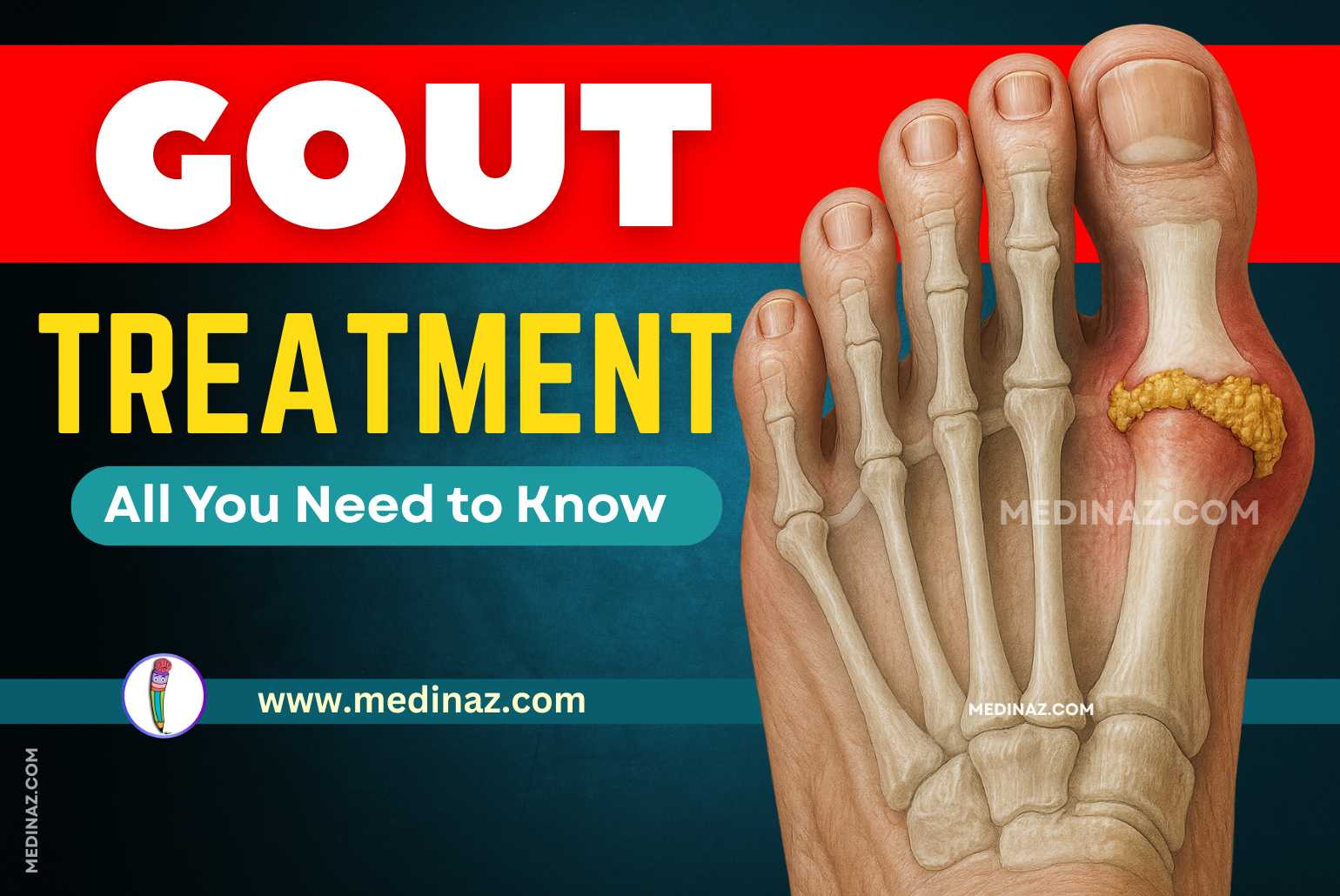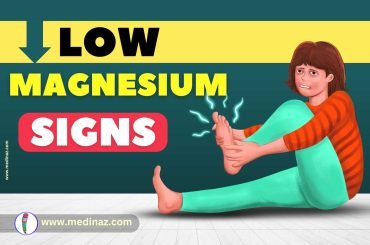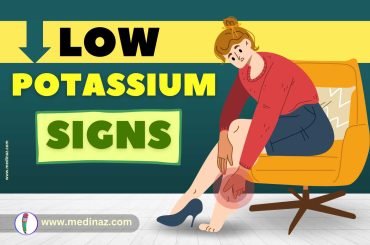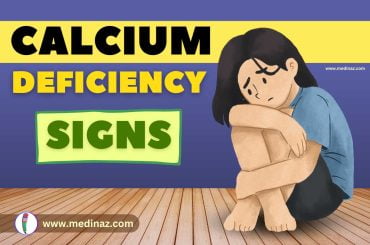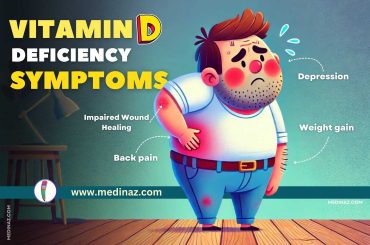Here’s an in‑depth, SEO‑optimized blog on Gout Treatment covering all current procedures and recommendations:
🩺 What Is Gout?
Gout is an inflammatory arthritis caused by monosodium urate crystal buildup in joints, often resulting from elevated uric acid levels (hyperuricemia). It typically presents as sudden, intense pain and redness, most commonly in the big toe, though knees, ankles, wrists, and fingers may be affected.
1. 💥 Acute Attack Management
The primary goal during an acute gout episode is rapid pain and inflammation control. Treatment should ideally begin within 24 hours of symptom onset .
1.1 Non‑Steroidal Anti‑Inflammatory Drugs (NSAIDs)
- First‑line for most patients.
- Common agents: ibuprofen, naproxen, indomethacin, diclofenac, COX‑2 inhibitors like celecoxib.
- All full‑dose NSAIDs show equal efficacy.
- Contraindicated in GI bleeding, kidney failure, uncontrolled hypertension, or heart failure.
1.2 Colchicine
- Effective when started early, usually within 24 hours.
- Low-dose regimen (1.2 mg, then 0.6 mg an hour later) is as effective and better tolerated.
- Watch for interactions (CYP3A4, P‑gp) and GI side effects.
1.3 Glucocorticoids (Steroids)
- Oral, IM/IV, or intra‑articular.
- Equally effective to NSAIDs and preferred in patients with contraindications to NSAIDs or colchicine.
- Intra‑articular injection works well for isolated joints; systemic steroids help polyarticular attacks .
- Taper doses progressively to reduce withdrawal risks.
1.4 Interleukin‑1 Inhibitors (e.g., Canakinumab)
- Option for refractory or complex cases.
- Effective but expensive and not first-line due to cost & side effects.
2. 🔒 Chronic Management & Prevention
Preventing flares and complications requires long‑term urate control and lifestyle changes.
2.1 Urate‑Lowering Therapy (ULT)
Initiated when:
- ≥2 gout attacks/year,
- presence of tophi, erosions, kidney stones/damage.
2.1.1 Xanthine Oxidase Inhibitors
- Allopurinol: First-line agent. Start low, titrate every 2–5 weeks to target serum urate ≤6 mg/dL. Screen for HLA-B*58:01 in Asians and African descent due to risk of severe hypersensitivity.
- Febuxostat: Alternative for allopurinol intolerance. Higher cardiovascular risk should guide caution.
2.1.2 Uricosuric Agents
- Probenecid, benzbromarone: Promote renal urate excretion. Used if underexcretion is confirmed and no history of stones.
2.1.3 Uricase Enzymes
- Pegloticase: IV infusion for refractory, tophaceous gout. Effective but costly, immunogenic, and can lead to infusion reactions.
2.2 Prophylaxis During ULT Initiation
- Anti-inflammatory prophylaxis (low-dose colchicine, NSAIDs, or steroids) during the first 3–6 months to mitigate flare risk as urate levels shift.
3. 🥗 Lifestyle & Dietary Measures
Complementary to pharmacotherapy:
- Weight loss for overweight individuals.
- Limit alcohol (especially beer), fructose-rich drinks, purine-heavy foods (organ meats, shellfish).
- Encourage low-fat dairy, vitamin C, coffee, cherries, and healthy diet.
- Treat comorbidities like hypertension, diabetes, sleep apnea, obesity to reduce flare risk .
4. 🧪 Diagnostic & Monitoring Essentials
- Confirmation via synovial fluid analysis (needle-shaped, negatively birefringent crystals).
- Serum uric acid testing: hyperuricemia defined as >7 mg/dL in men, >6 mg/dL in women.
- Monitor kidney function, urate levels, and medication side effects regularly.
- Imaging (X-ray/ultrasound) for chronic joint damage or tophi assessment.
5. 🧭 2025 Treatment Guidelines at a Glance
- ACR 2020, EULAR, and other bodies stress early ULT initiation, even during acute flares, alongside anti‑inflammatory measures.
- ULT underutilization persists—studies show poor provider awareness of targets and timing .
- Monitoring for hypersensitivity and cardiovascular risk continues to guide agent choice .
6. ✅ Summary Table: Treatment Options
| Phase | Treatment Options | Notes |
|---|---|---|
| Acute flare | NSAIDs, colchicine, glucocorticoids, IL‑1 inhibitors | Start within 24 hours |
| Prevention | Allopurinol → Febuxostat → Probenecid → Pegloticase | Titrate to urate ≤6 mg/dL |
| Lifestyle | Diet changes, weight loss, limit alcohol | Essential alongside meds |
| Monitoring | Blood tests, HLA screening, kidney/joint monitoring | Ongoing check-ups needed |
Frequently Asked Questions about Gout Treatment:
1. What is the fastest way to treat a gout attack?
The fastest way is to take anti-inflammatory medications like NSAIDs (ibuprofen, naproxen) or colchicine within the first 24 hours of symptoms. Applying ice packs, resting the joint, and keeping it elevated also helps reduce pain and swelling.
2. Can gout go away without treatment?
Mild gout attacks may resolve in 1-2 weeks without treatment, but the pain can be severe during this period. Without proper management, recurrent attacks and joint damage are likely. Early treatment shortens attack duration and prevents complications.
3. Which medications are used for long-term prevention of gout?
Urate-lowering therapies (ULTs) like allopurinol and febuxostat are commonly used to maintain serum uric acid below 6 mg/dL. These help prevent future attacks and dissolve urate crystals over time.
4. When should urate-lowering therapy (ULT) be started?
ULT is recommended for patients with:
- Two or more attacks per year
- Tophi (urate crystal deposits)
- Kidney stones or chronic kidney disease
It can be started even during an acute attack if anti-inflammatory treatment is already underway.
5. Is colchicine safe for everyone?
Colchicine is generally safe but should be used cautiously in elderly patients and those with kidney or liver disease. Dose adjustments are required in these groups. Common side effects include diarrhea and nausea.
6. Can I take gout medications during an acute flare?
Yes. Anti-inflammatory drugs like NSAIDs, colchicine, or corticosteroids are used to treat the flare. If you’re already on ULT like allopurinol, do not stop it during the attack, as stopping may worsen the condition.
7. What foods should I avoid if I have gout?
Limit:
- Red meat and organ meats (liver, kidney)
- Seafood (sardines, anchovies)
- Alcohol (especially beer and spirits)
- Sugary drinks (fructose-rich sodas)
Instead, choose low-fat dairy, vegetables, cherries, and water to lower uric acid.
8. Can gout be cured permanently?
Gout can’t be “cured,” but it can be effectively controlled. With proper medication and lifestyle changes, most patients remain flare-free and prevent joint damage.
9. Are there natural remedies for gout?
While medications are the mainstay, lifestyle measures like weight loss, staying hydrated, eating cherries, and avoiding alcohol help reduce flares. However, natural remedies alone are not enough for most people and should complement medical treatment.
10. What happens if gout is left untreated?
Untreated gout can lead to:
→ Frequent flares
→ Joint deformities and destruction
→ Formation of tophi (chalky urate deposits under the skin)
→ Kidney stones and chronic kidney disease
Prompt treatment helps prevent these complications.
A Visual Learning Platform

